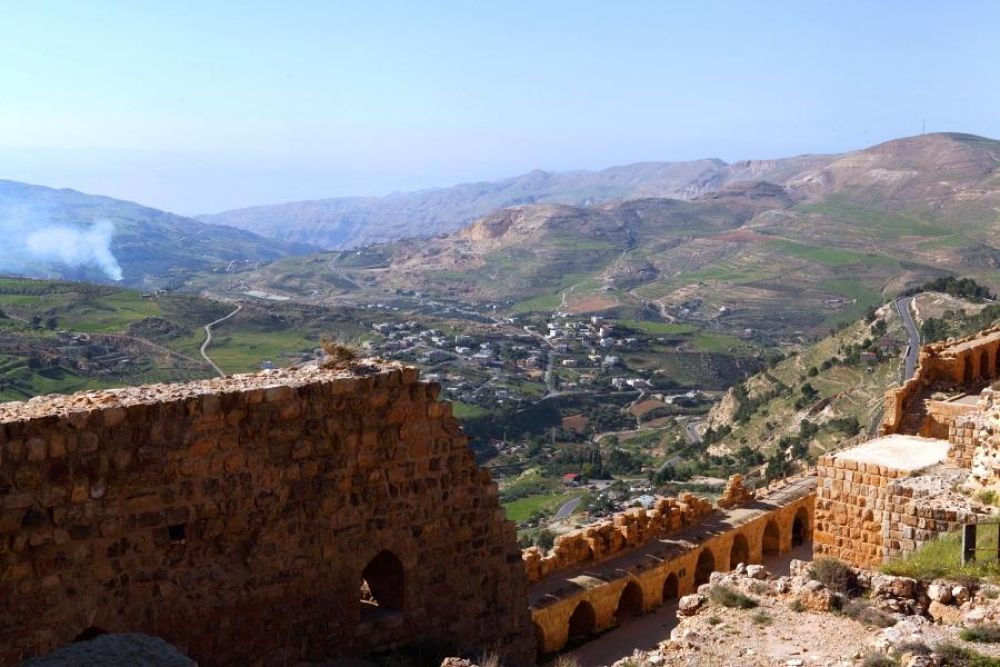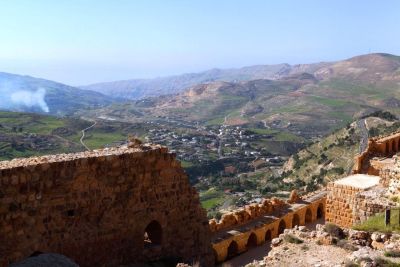

Dive into the history of the Crusaders and Arab dynasties with a visit to the imposing Karak Castle. This ancient fortress, also known as Kerak or Al-Karak, dominates the city and provides a tangible link to the region's medieval past. Built by Baldwin I of Jerusalem in the 12th century, the castle showcases architectural and military elements from the Crusaders as well as later Arab occupants. Tourists can explore the network of stone galleries, towers, and chapels and soak in panoramic views from the ramparts. The site also hosts a museum that offers insight into its rich history through an array of artifacts and exhibits. Prepare for a journey across centuries as you navigate through the castle's underground tunnels and stand where warriors once defended their stronghold.
The Museum of Moabite History is a cultural gem located in the heart of Karak Old City. This museum offers visitors a chance to learn about the ancient Moabite civilization that once flourited in the region. The collection includes artifacts from the Iron Age, showcasing daily life, religion, and warfare of the Moabite people. Many items are sourced from local archaeological sites, such as pottery, coins, and inscriptions. The museum is also home to some of the famous Mesha Stele replica, which details the rebellion of the Moabite king Mesha against the Kingdom of Israel. Tours often feature detailed explanations about the significance of each artefact, creating an engaging and educational experience for history enthusiasts. A visit to this museum is a must for anyone interested in the historical underpinnings of Jordan and the intricate tapestry of cultures that have shaped its legacy.
Embark on a historical walking tour through Karak to discover the remnants of the city's Ottoman heritage. Karak contains numerous buildings dating back to the Ottoman era, characterized by their distinct architectural features. This journey takes you to see old houses, administrative buildings, and mosques that have stood the test of time. The tour may include visits to places like the Karak Archaeological Museum, which itself is housed in a 19th-century Ottoman governmental building. One can also explore the vibrant local markets and traditional coffee shops along the way. Throughout the tour, a local guide will provide insights into the stories and significance of each site, blending architectural appreciation with tales of the townsfolk who have lived through generations, contributing to the rich tapestry of Karak's history.
Karak Old City offers a taste of local culture quite literally, through traditional cooking classes available to visitors. Join a local chef and learn to cook authentic Jordanian dishes that have been passed down through generations. You will get hands-on experience preparing classic recipes such as Mansaf, the national dish made of lamb cooked in a sauce of fermented dried yogurt and served with rice or bulgur, and Maqluba, an upside-down dish of rice, vegetables, and meat. Typically, these classes are held in a local home or a cooking school, providing a unique cultural immersion. The best part is the feast at the end, where you can enjoy the fruits of your labor. Cooking classes not only offer a delicious meal but also the skills to recreate Jordanian culinary delights at home.
No visit to Karak Old City is complete without a stroll through the bustling souks (markets). The Karak souks are a colorful tapestry of merchant stalls, traditional crafts, and local produce. Here, shoppers can find everything from freshly baked bread to aromatic spices, handwoven textiles, and intricate jewelry. Navigating the narrow alleys, visitors will encounter the essence of daily life in Karak, as vendors hawk their wares and the scent of cardamom-laced coffee fills the air. Bargaining is expected, so be prepared to negotiate prices. Visiting the souk is not just about shopping; it's an opportunity to engage with the local community, understand their way of life, and take part in an age-old tradition of commerce and cultural exchange.
The Karak Archaeological Park presents an opportunity to explore the city's ancient ruins and archaeological findings. It's situated adjacent to Karak Castle, extending the historical journey beyond the castle's walls. The park features remnants of structures from various periods, including the Byzantine and Islamic eras, offering a glimpse into the area's diverse past. Visitors can walk among the ruins of churches, see the remains of ancient homes, and imagine life as it was centuries ago. Exhibits and signage help provide context and information about the historical significance of the discoveries. Visiting the archaeological park is like stepping through a portal in time and experiencing the living history of this ancient city.
